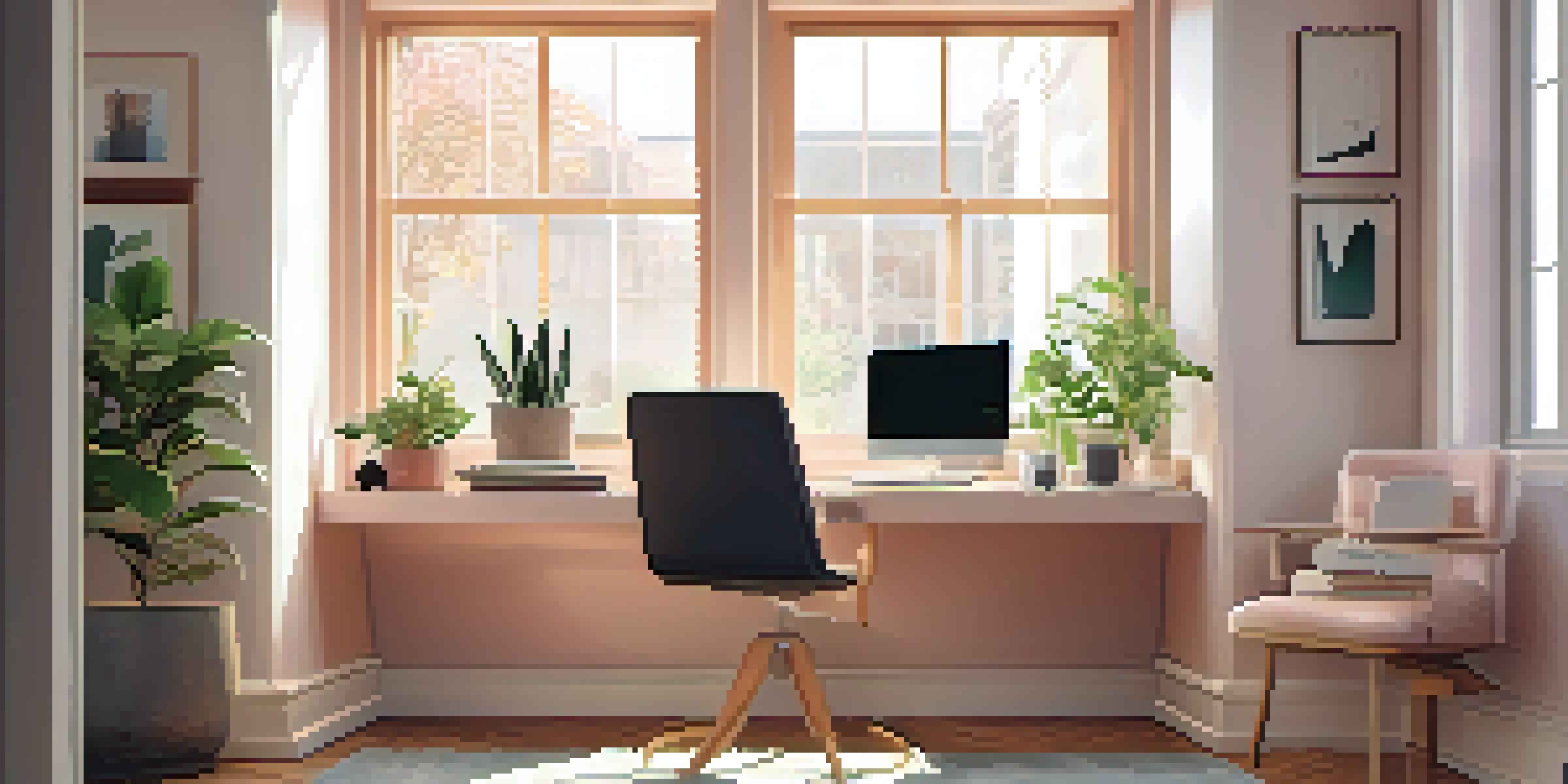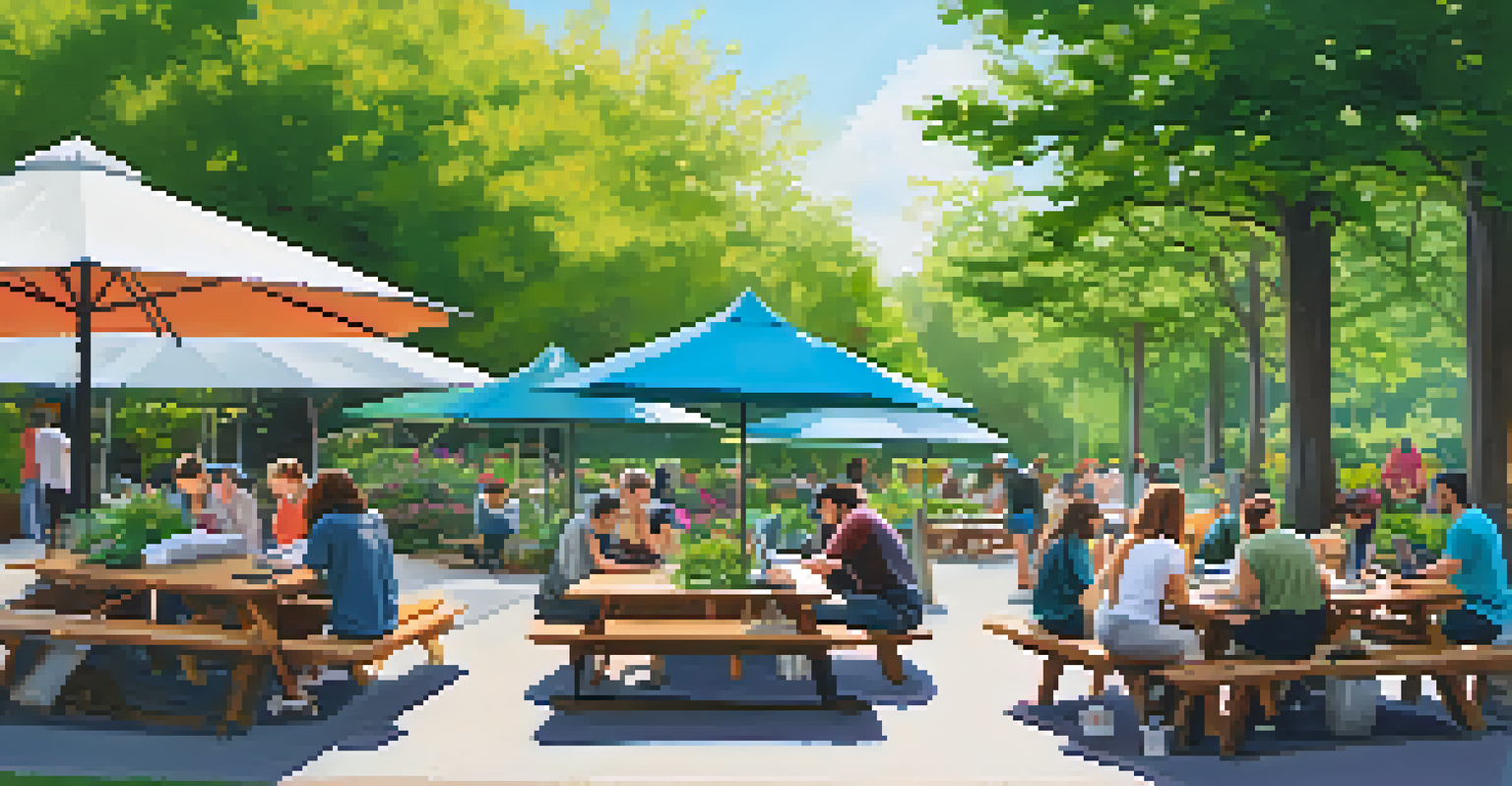The New Housing Norms: Remote Work and Community Spaces

The Rise of Remote Work: A New Normal in Housing
The shift to remote work has fundamentally changed how we view housing. No longer tied to a physical office, many professionals are seeking homes that accommodate their work-from-home lifestyle. This trend has led to an increased demand for larger spaces, home offices, and areas that promote productivity.
The future of work is not about where you are, but how you work.
With remote work becoming a staple, homebuyers prioritize features like high-speed internet, quiet spaces, and even dedicated work-from-home areas. This has prompted builders and developers to rethink traditional home designs, creating spaces that blend work and home life more seamlessly.
As remote work continues to be the norm, we may see a significant reallocation of housing resources. Communities will need to adapt, ensuring that homes meet the evolving needs of residents who now value functionality as much as aesthetics.
Community Spaces: Redefining Connection in a Remote World
As more people work remotely, the importance of community spaces has surged. These areas provide opportunities for social interaction and collaboration, essential for combating the isolation that can come with remote work. Think of parks, co-working spaces, and communal gardens as the new 'offices' where ideas thrive.

Communities are increasingly investing in spaces that encourage gathering and creativity. From outdoor workstations to designated areas for workshops and events, these designs foster a sense of belonging and shared purpose among residents. They create environments where neighbors can connect, collaborate, and support one another.
Remote Work Reshapes Housing Needs
The demand for larger homes with dedicated workspaces is increasing as professionals adapt to remote work.
In a world where physical interaction is limited, these community spaces become vital. They transform the way we engage with our neighbors, promoting a culture of collaboration and support that enhances both work and personal life.
Designing Homes for Work-Life Balance
With remote work embedded in our lives, home design has taken a front seat in discussions about work-life balance. Homeowners now look for layouts that allow for clear separation between work and personal spaces. This shift is leading to innovative designs that cater to both aspects.
Community is much more than belonging to something; it’s about doing something together that makes belonging matter.
For example, some homes now feature soundproof offices or flexible rooms that can easily transition from a workspace to a relaxation area. This dual functionality not only maximizes space but also encourages a healthier balance between work and leisure.
As we move forward, the demand for homes that reflect this balance will only grow. It’s not just about having a home office; it’s about creating an environment that fosters productivity without sacrificing comfort.
The Impact of Technology on Housing Trends
Technology is a key player in shaping the new housing norms. Smart home features enhance remote work by providing convenience, security, and connectivity. Homeowners are increasingly looking for properties that integrate these technologies to make their daily lives easier.
From smart thermostats that adjust to your schedule to virtual assistants that help manage tasks, technology is redefining what homeowners expect. This push for tech-savvy homes is also influencing the real estate market, as buyers become more selective about their purchases.
Community Spaces Foster Connection
Investments in community spaces are essential for promoting social interaction and creativity among remote workers.
Incorporating technology into housing not only boosts efficiency but also appeals to a younger, tech-oriented demographic. As remote work continues to evolve, we can expect technology to play an even larger role in future housing developments.
Sustainable Living: A Growing Priority in Housing
As the world shifts towards remote work, sustainability has become a crucial consideration in housing development. More people are seeking eco-friendly homes that minimize their environmental impact. This trend is reshaping the way new communities are planned and built.
Sustainable homes often feature energy-efficient appliances, solar panels, and sustainable materials, attracting buyers who prioritize environmental responsibility. Communities are also focusing on green spaces and amenities that promote outdoor activities and well-being.
This growing emphasis on sustainability not only benefits the planet but also enhances the quality of life for residents. With a collective shift towards eco-conscious living, housing norms are evolving to reflect these values.
Adapting to Diverse Lifestyle Needs
The rise of remote work has highlighted the need for diverse housing options that cater to various lifestyles. Single professionals, families, and retirees all have unique requirements that must be addressed. This adaptability is crucial for creating inclusive communities.
Multi-generational homes, tiny houses, and co-housing arrangements are becoming more popular as people seek living solutions that fit their specific needs. These options not only provide flexibility but also foster a sense of community among residents who share similar values.
Sustainability Drives Housing Trends
Eco-friendly features are becoming a priority for homebuyers as they seek to minimize their environmental impact.
As we embrace this diversity, future housing developments will likely showcase a variety of living arrangements. This approach allows for greater inclusivity, ensuring everyone can find a place that feels like home.
The Future of Housing: Trends to Watch
As we look ahead, several trends are shaping the future of housing in the context of remote work and community spaces. Increased demand for flexible living arrangements, sustainable practices, and technology integration are all crucial elements that will define new housing developments.
Moreover, the emphasis on community-oriented spaces will likely lead to more collaborative living environments. This trend not only enhances social interaction but also supports a healthier work-life balance for residents.

Ultimately, the housing landscape will continue to evolve as we adapt to new norms. By embracing these trends, we can create vibrant communities that support both remote work and personal connection.